- News
- Reviews
- Bikes
- Accessories
- Accessories - misc
- Computer mounts
- Bags
- Bar ends
- Bike bags & cases
- Bottle cages
- Bottles
- Cameras
- Car racks
- Child seats
- Computers
- Glasses
- GPS units
- Helmets
- Lights - front
- Lights - rear
- Lights - sets
- Locks
- Mirrors
- Mudguards
- Racks
- Pumps & CO2 inflators
- Puncture kits
- Reflectives
- Smart watches
- Stands and racks
- Trailers
- Clothing
- Components
- Bar tape & grips
- Bottom brackets
- Brake & gear cables
- Brake & STI levers
- Brake pads & spares
- Brakes
- Cassettes & freewheels
- Chains
- Chainsets & chainrings
- Derailleurs - front
- Derailleurs - rear
- Forks
- Gear levers & shifters
- Groupsets
- Handlebars & extensions
- Headsets
- Hubs
- Inner tubes
- Pedals
- Quick releases & skewers
- Saddles
- Seatposts
- Stems
- Wheels
- Tyres
- Health, fitness and nutrition
- Tools and workshop
- Miscellaneous
- Cross country mountain bikes
- Tubeless valves
- Buyers Guides
- Features
- Forum
- Recommends
- Podcast
review
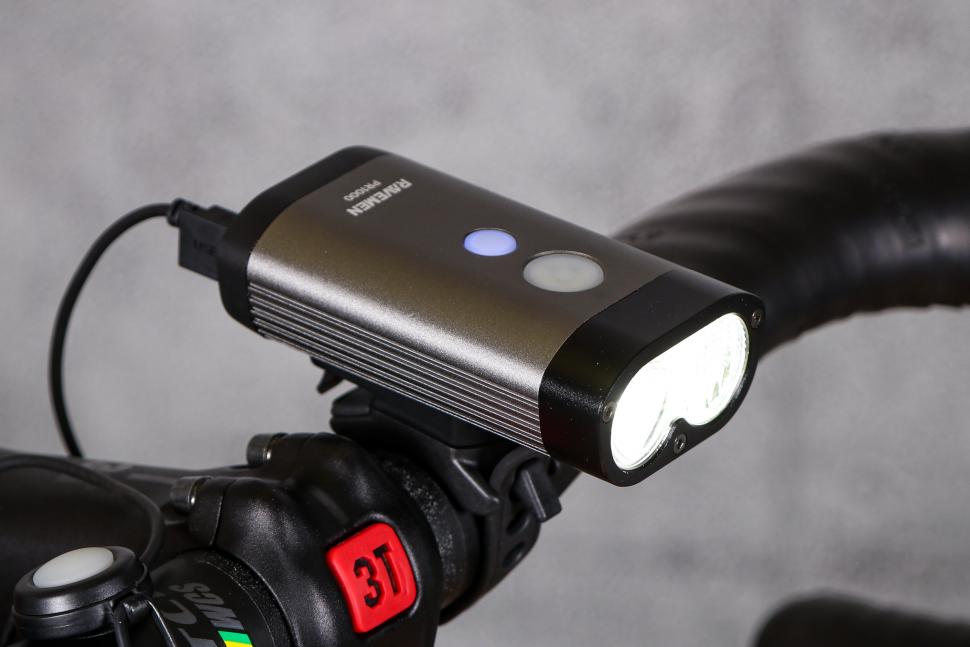 2022 Ravemen PR1000 USB Rechargeable DuaLens Front Light with Remote 1.jpg
2022 Ravemen PR1000 USB Rechargeable DuaLens Front Light with Remote 1.jpg£79.99
VERDICT:
Well-constructed, with a useful dipped beam mode, good battery life and can double as a power bank. But a disappointing strap
Great battery life
Solid construction quality
Works well as a power bank
It can be charged from an external power pack
Handy remote button
Dipped beam doesn't blind oncoming drivers or cyclists
Disappointing strap mount
No side visibility
Rubber buttons not great with winter gloves
Weight:
164g
Contact:
At road.cc every product is thoroughly tested for as long as it takes to get a proper insight into how well it works. Our reviewers are experienced cyclists that we trust to be objective. While we strive to ensure that opinions expressed are backed up by facts, reviews are by their nature an informed opinion, not a definitive verdict. We don't intentionally try to break anything (except locks) but we do try to look for weak points in any design. The overall score is not just an average of the other scores: it reflects both a product's function and value – with value determined by how a product compares with items of similar spec, quality, and price.
What the road.cc scores meanGood scores are more common than bad, because fortunately good products are more common than bad.
- Exceptional
- Excellent
- Very Good
- Good
- Quite good
- Average
- Not so good
- Poor
- Bad
- Appalling
The Ravemen PR1000 is a high-quality and durable front light, with a great battery life, a high-low beam that doesn't blind oncoming drivers and a variety of useful charging options. However, its strap mount could be better, and it doesn't have any side visibility.
Ravemen says its PR1000 is a "simulation of automotive headlight design", which basically means you can flip it between a high and a dipped beam. There are two lenses, with the dipped lens refracted to keep the beam shining downwards.
It is the most compact and lightest model in Ravemen's PR light range and, according to Ravemen, is the "best choice for road cycling, gravel biking and daily commuting". It comes with a wired remote switch, and an O-ring for mounting it, as well as a strap mount and a short USB-C charging cable.
Charging ports
The PR1000 has two rear ports: the smaller USB-C is for charging and to plug in the remote switch if required; the second port is a full-size standard USB out port that lets you use the PR1000 as a battery pack, so you can top up your phone for example.
You can also run the PR1000 can from an external battery pack for additional run time. This external battery pack will need a five-volt output, and you won't be able to connect the remote switch when the light's powered this way.
The Ravemen is a neat little unit, with an anodised silver aluminium body that feels solidly constructed, and it has a decent heft in the hand. The body's on-off and high-low buttons are rubberised and the charger ports are secured by small flaps, which are held in place when not in use by small bungs. It's IPX8 rated, and after downpours and fully submerging it in water, I can attest to its ability to withstand getting seriously soaked.
Although the rubberised buttons are easy to use when you're wearing fingerless gloves, the buttons are flush to the body and aren't as easy to press with thick winter gloves. I found I had to stab them quite hard to change modes.
Light modes
The high-dipped beam function is excellent, and you alternate between modes by pressing the main button on the top. Once in high or dipped mode, you can use the smaller top button or the external switch to cycle between different brightness modes.
When the light is dipped you can also hold down the external switch to temporarily get the light's full 1000 lumens – I found this useful for checking for potholes in the gloom.
The dipped mode is dissipated in a widely spread beam. I used this for several weeks on the shared-use Bristol-Bath bike path and didn't receive any complaints from oncoming cyclists – and believe me, they're quick to tell you if your light is shining in their eyes!
I found the dipped mode's 500 lumens perfectly adequate for riding on the road and felt safe riding at speeds of over 20mph.
The main beam is also very good. This turns on the second LED to create a powerful spotlight in the centre of the more dissipated dipped beam's spread.
> The best 2021/22 front lights for cycling
I found the rapid flash mode very useful for daytime riding. As with many of today's lights, the PR1000 handily remembers the last mode you used, which saves you cycling back to your favourite mode.
If I could have made an improvement to the lighting pattern, it would have been the addition of visibility from the side. Some brands have lenses on the side and I like the reassurance of traffic being able to see me from the sides, especially at junctions.
Run times and charging time
Ravemen claims the following run times for the different modes and I found these to be pretty accurate: in the dipped mode: 500 lumens for 2.5 hours; 300 lumens 4.5 hours; 150 lumens 10 hours; Eco mode 20.5 hours; rapid flash 36 hours.
On high mode: 'full beam' 1000 lumens 1.5 hours; 500 lumens 2.2 hours; 250s lumen 6 hours.
You can extend the run time by using a five-volt power pack. If the light's own battery is flat, you can run it at a maximum of 500 lumens – still a very handy output – using an external battery pack.
The charging time was good too, taking just two hours to charge from fully discharged.
This was complemented by a battery life that really stood out. While commuting I was using a mix of the various modes, and it just kept on going. Not only did it easily last a week of commuting – around eight hours – I even used the light to top up my phone battery at the end of the week.
The mount
I'm not quite so positive when it comes to the mount. This is a rubber strap with holes that let you adjust the tightness. The curve of the mount means it's suited only to round handlebars, and the strap isn't long enough for an aerobar. The mount is designed to let the PR1000 turn 10 degrees to the left or right, though I found the action loose, and it didn't really stay in place.
A more serious criticism is that on rough, potholed surfaces the mount just wasn't secure enough. On a few occasions the PR1000 slipped backwards and ended up pointing up in the air – which is the last thing you want on a steep, dark, pothole-strewn descent. The solution I found to keep the PR1000 in place was to attach the mount over my bar tape, enabling it to dig into the tape for extra friction, but that put it further away from the centre of my bar than I really wanted.
Fortunately, you can swap the rubber mount for Ravemen's ABM05 (for 31.8 and 35mm bars) or the ABM01 (for 22.2, 25.4 and 31.8mm bars). Both of these are screw-type mounts and are widely available for less than £6 – but I really would have preferred to have seen one of these included on what is otherwise such a high-quality offering.
Value and rivals
But for £79, I still think the Ravemen PR1000 is decent value compared to other lights with similar features and power output.
The Moon Rigel Pro that Stu tested costs £65. It also offers a 1000-lumen maximum output and an aluminium body, but it comes with a secure Garmin-style mount.
Jamie felt the £69 Magicshine Allty 1000 was very easy to use with useful modes, a secure mount, an alloy body and a decent amount of side illumination.
The Knog PWR Road Front Light doesn't have quite the same maximum output but does share the PR1000's ability to charge other devices via its USB port – but at £99.99 it's now a fair bit dearer than the Ravemen, and when Matt tested it he felt the beam wasn't that effective.
To sum up, the Ravemen PR1000 is a well-constructed light with a genuinely useful dipped beam mode that doesn't blind other road users. It's quick to charge and its ability to double up as a power bank adds to the package. Had it come with a better mount – which would have been an inexpensive addition – it would have scored more.
Verdict
Well-constructed, with a useful dipped beam mode, good battery life and can double as a power bank, but a disappointing strap
road.cc test report
Make and model: Ravemen PR1000 USB Rechargeable DuaLens Front Light with Remote
Size tested: 1000 lumens
Tell us what the light is for, and who it's aimed at. What do the manufacturers say about it? How does that compare to your own feelings about it?
Ravemen says its PR1000 is a "simulation of automotive headlight design", which means you can flip it between a high beam and a low beam.
It says it is the most compact and lightest of its PR lights, and is the "best choice for road cycling, gravel biking and daily commuting".
The PR1000 has an impressively robust feel to it, although I was curious to see if the belt strap-style mount would hold it securely in place.
Tell us some more about the technical aspects of the light?
IPX8 Waterproof
Durable aluminium body
Rubber strap mount
Anti-glare dual lens
Hi-Lo beam
Wired remote control
Runtime extension via external battery pack
Daytime flash mode
USB-C input, USB output
3200 mAh/3.7 volts, Rechargeable Lithium-Ion battery
Rate the light for quality of construction:
8/10
The Ravemen is a neat little unit, with an aluminium body that feels well put together. The on-off switch on the body is rubberised, as is the button you use to flip between the light's various settings. The charger ports are secured by small rubber flaps.
The mount is a rubber strap type with holes to adjust the tightness of the strap. Once mounted the light can be adjusted 10 degrees to the left or right.
The light itself is solidly constructed, with a silver anodised aluminium housing. The front section containing the lenses is a painted black aluminium, with the rear section containing the USB and USB-C ports made from a durable plastic. The USB ports have rubber flaps to prevent water ingress when not in use. The remote switch is on a 32cm-long cable, which attaches to the handlebars using a small O-ring. This remote switch also has a rubberised button that lets you cycle through the various modes.
Rate the light for design and ease of use. How simple was the light to use?
7/10
The rubber buttons are a little tricky to press with winter gloves, and I didn't always quite manage to pick the correct mode – though I got there with a little bit of practice.
Unlike on some lights, there are no lens apertures on the side – so there's no sideways illumination, which can be a boon at junctions.
Rate the light for the design and usability of the clamping system/s
3/10
The clamp is a simple belt-strap design. Unfortunately I found it inadequate for the weight of the PR1000.
On some some bumpy downhills, it had a tendency to slip backwards and I'd end up with the light facing up in the air – which is the last thing I wanted on a steep descent.
It has 10 degrees of side-to-side swivel, although this didn't stay put and would invariably return to the central position.
Rate the light for waterproofing. How did it stand up to the elements?
10/10
IPX8 waterproofing means that it can survive being submerged in 1.5 meters of fresh water for up to 30 minutes. I was out in a couple of downpours during testing and the PR1000 held up very well. I've also tipped several buckets of water over it and even submerged it completely for a few minutes, and it took it all like a champ and remained totally unaffected. It should stand up to the worst conditions you're ever likely to encounter. The two USB ports have tight-fitting rubber covers that stay perfectly in place when not in use.
Rate the light for battery life. How long did it last? How long did it take to recharge?
9/10
The battery life really stood out for me. While commuting I was using a mix of the various modes, including the claimed 36-hour rapid flashing mode, and it just kept on going. Easily able to last a week of commutes, and I even used the light to top up my phone battery while riding. It really is very good.
Run times are as follows from Ravemen, and I found these to be pretty accurate: In the dipped mode: 500 lumens for 2.5 hours; 300 lumens 4.5 hours; 150 lumens 10 hours; Eco mode 20.5 hours; rapid flash 36 hours.
On high mode 'full beam': 1000 lumens 1.5 hours; 500 lumens 2.2 hours; 250 lumens 6 hours.
You can extend the run time by using a power bank with a five-volt output. If the light's own battery is completely flat, you can run it from an external power pack at a maximum 500-lumen output, which is still useful for a long night ride.
Charging time from fully discharged is approximately two hours.
Rate the light for performance:
8/10
I used the Ravemen PR1000 mostly for a mix of commuting and road riding. The dipped mode worked very well and the battery life was very good.
Rate the light for durability:
8/10
I did inadvertently do a realistic drop test on the PR1000 when I didn't properly clip it to the mount and it took a tumble on a 30kph descent. Apart from a few scratches it was fine, so it's certainly durable as well as resistant to the elements.
Rate the light for weight:
8/10
164 grams is fine for the impressive battery life and light output – though I do feel the mount isn't quite up to the task of always holding that weight perfectly in place.
Rate the light for value:
7/10
It's in the right ballpark for lights of the same output, but there are some good extra features such as the power bank function.
Tell us how the light performed overall when used for its designed purpose
Good, apart from when the mount slipped on bumpy descents.
Tell us what you particularly liked about the light
Rugged, waterproof construction.
Useful selection of modes and a dipped beam that doesn't blind oncoming road users.
Extremely good battery life.
Handy ability to be charged on the go, and also to be used as a power bank for charging other devices.
Tell us what you particularly disliked about the light
The mount can slip on bumpy roads – and the swivel doesn't stay swivelled!
The beam only points directly forward, so there is no side visibility.
Only suitable for round handlebars, as the mount is curved and there isn't enough strap for aerobars.
How does the price compare to that of similar products in the market, including ones recently tested on road.cc?
About right.
Did you enjoy using the light? Most of the time, apart from when the strap slipped on bumpy descents.
Would you consider buying the light? Yes, but I would purchase a better mount for it.
Would you recommend the light to a friend? Yes
Use this box to explain your overall score
7 out of 10 – with a better mount it would have scored 8
About the tester
Age: 43
I usually ride: GT Grade My best bike is: Boardman ASR 8.9
I've been riding for: Over 20 years I ride: Most days I would class myself as: Experienced
I regularly do the following types of riding: commuting, club rides, sportives, general fitness riding, mtb, Zwifting
Latest Comments
- Hirsute 3 min 19 sec ago
Car spreading https://climatevisuals.org/carspreading/ https://cleancitiescampaign.org/carspreading
- Bigtwin 16 min 10 sec ago
"Welcome to your local Council - you don't have to be a moron to work here, but it really helps if you want to blend in".
- Bigtwin 18 min 22 sec ago
Must have done something to upset the Court - a year is a long sentence for killing a cyclist in this day and age. Imagine what she would have got...
- Bigtwin 22 min 47 sec ago
So I can choose wisely for my commute, I would like to see this comparison done with a penny fathing and a Ducati Panegali.
- Rendel Harris 32 min 16 sec ago
Laverack still offer the same machine in a rim brake version so the "disc" is there to differentiate it from its stablemate.
- mdavidford 1 hour 10 min ago
Quite right - get those soapboxes off our roads. As everyone knows, the right place for them is the internet.
- Bungle_52 1 hour 13 min ago
It's finally live. Here is the link :...
- David9694 1 hour 15 min ago
First warm and sunny weekend for the New Forest
- Rendel Harris 2 hours 18 min ago
The Michelin Power Gravel Adventure might fit your requirements, or the Vittoria Terreno Zero ("tubeless ready" but no reason you couldn't run it...
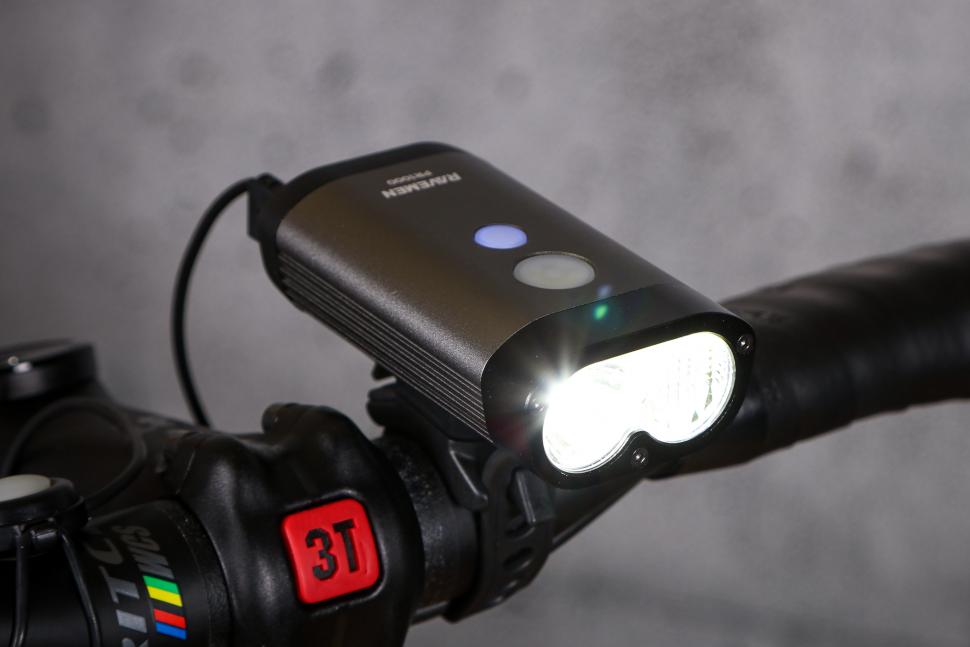
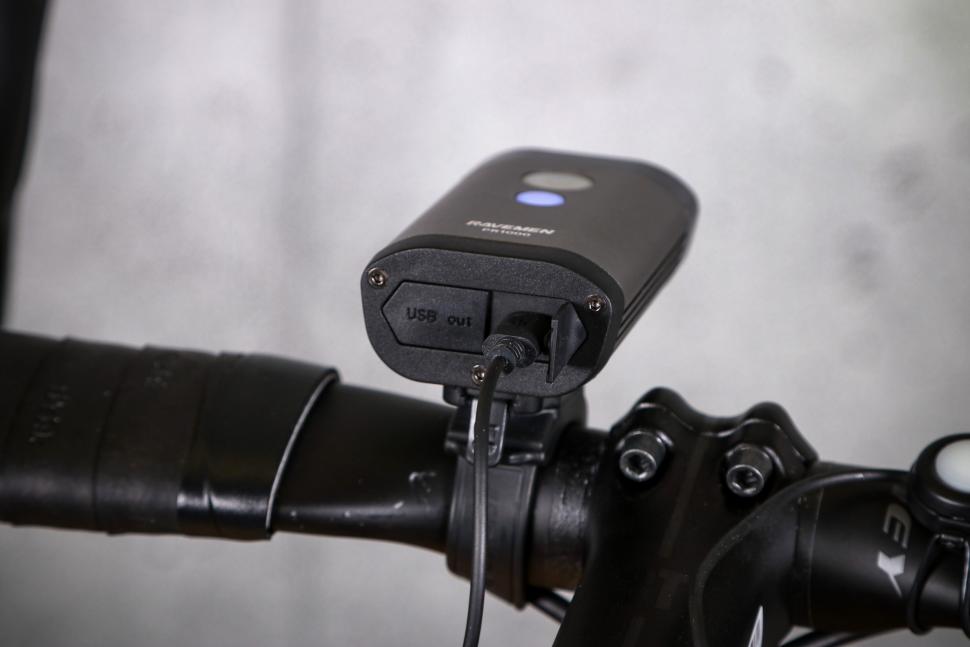

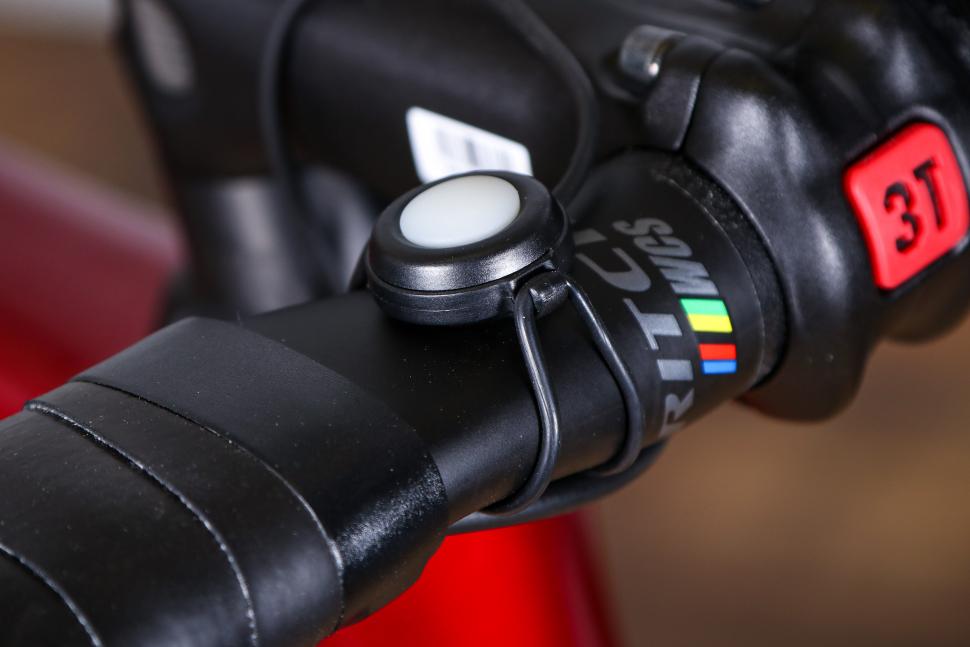
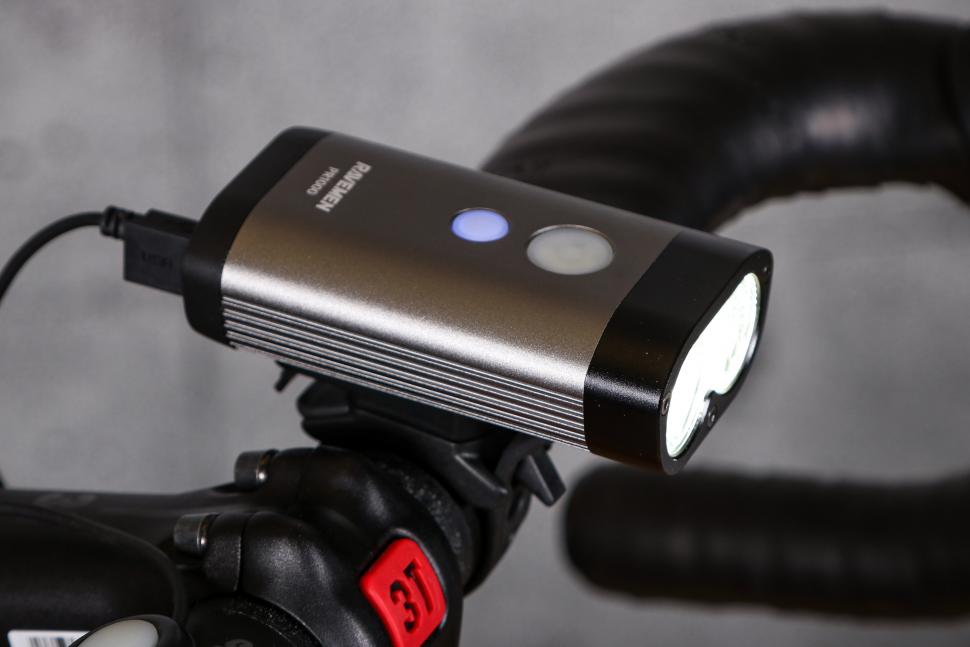

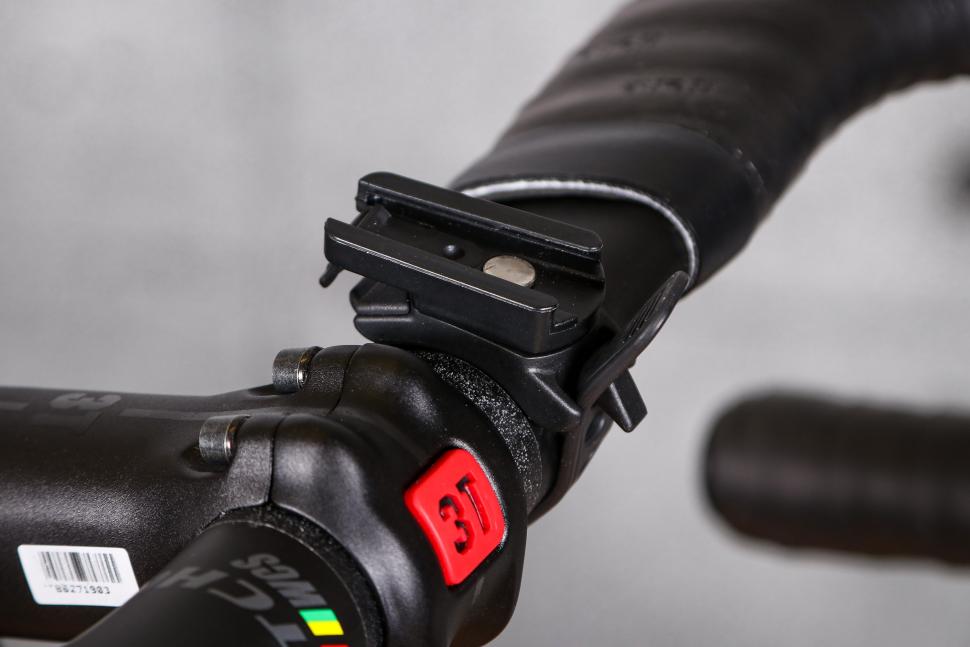

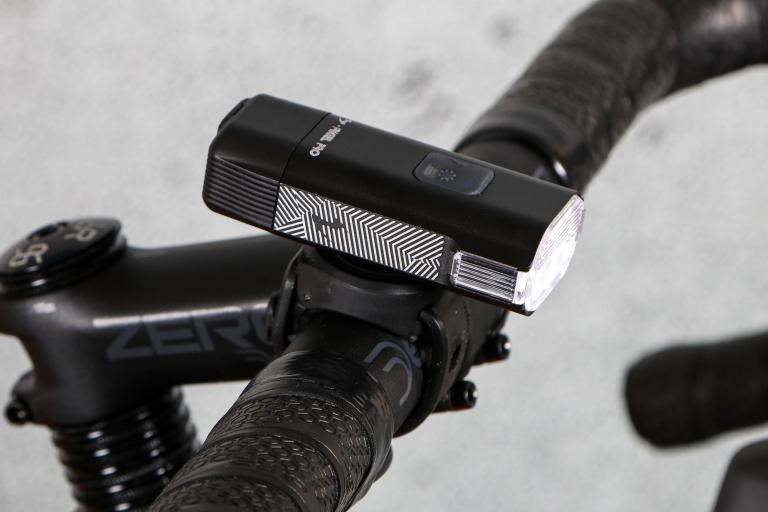
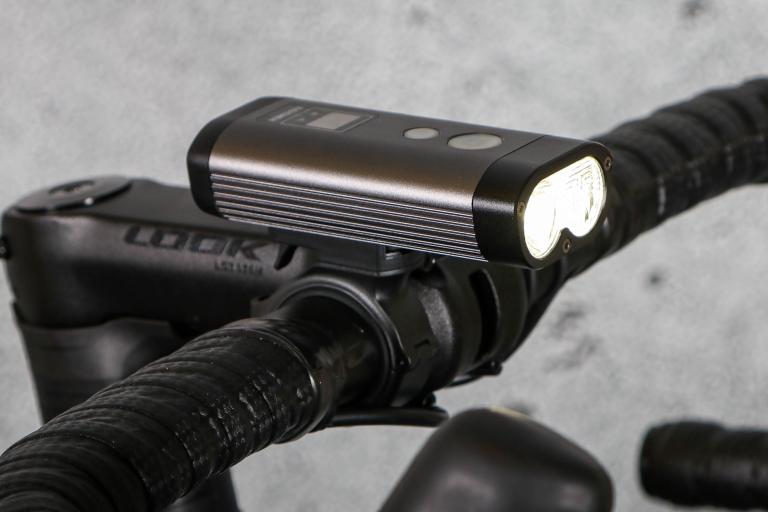

Add new comment
4 comments
I have one of the older models it's great for charging a PS controller whilst gaming.
I've the older PR800 and that comes with the screw on mount. I've never had that slip. It's odd they've swapped the mount out.
My PR800 is still going good. The only issue I've had is if it's raining, you really have to seal up the ports and not use the remote. The micro-usb connector on the remote will also corrode if you don't cover it. Mine is wired under my bar tape with the remote on the inside of the brake lever so you can flip main beam on while on the brake hoods or in the drops. The connector end has a bit of inner tube around it to stop muck getting in when not attached to the light. Good lights.
I have one of these (or maybe it's the PR1200?).. anyway it's a great bit of kit. I have an older model (not sure I can see any differences to be fair) which came with a bolt on type handlebar mount. My one gripe is that that it's a bit too heavy for the local bash, but it's as bright as a small sun on full power.
Agree, I've got a version with a proper bar mount. It's bright with good spread but a little on the heavy side.